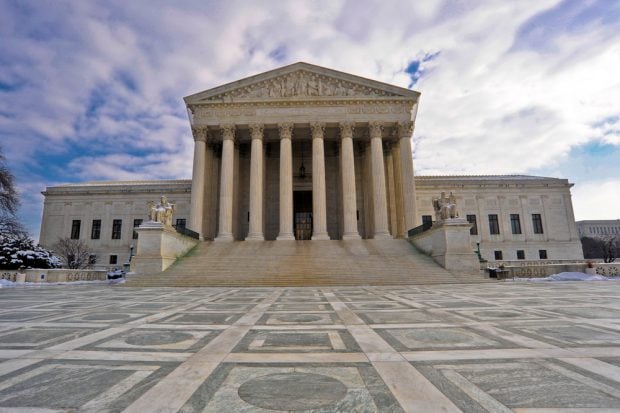American International Group is on the verge of becoming thefirst insurance holding company ever regulated by the Federalgovernment.
|In a statement, the Treasury Department said last night that itis launching a public offering of $18 billion of AIG stock.
|Simultaneously, AIG said it would purchase up to $5 billion ofthat stock.
|AIG is expected to use cash on hand as well as more than $2billion gained from the sale of some of its remaining holdings inAmerican International Assurance, or AIA Group Ltd., its HongKong-based life insurance subsidiary.
|That sale took place Friday.
|The decline of U.S. ownership below 50 percent would triggerfederal regulation, according to a bevy of securities analysts andindustry lawyers, some of whom formerly worked at the FederalReserve Board.
|Federal regulation of AIG cannot not occur before thegovernment's stake in AIG drops below 50 percent because thegovernment cannot regulate something in which it holds a majorityinterest, according to various industry lawyers, some of whom haveworked for federal financial service regulatory agencies.
|Spokesman for the Fed would not confirm or deny it.
|Under an amendment to the Dodd-Frank financial services reformlaw, if AIG is regulated as a thrift holding company, it would besubject to consolidated regulationby the Federal Reserve Board.
|In a note to investors on Aug. 31, Ray Schoen of WashingtonAnalysis, a buy-side securities analytical group which adviseshedge funds and institutional investors, said that, “In short, thecompany is poised to face real regulatory supervision of itsnon-insurance financial business for the first time in itshistory.”
|Schoen said that, “While Treasury's exit is certainly along-term positive for AIG, “investors should be aware that federalregulation presents a litany of new restrictions for the company,including minimum leverage and risk-based capital requirements, aswell as restrictions on dividend payments and share buybacks.”
|The National Underwriter also published on Aug. 5, astory based on comments Robert Benmosche, AIG's president and CEOmade at its Aug. 3 earnings conference call with analysts where itwas said that AIG is preparing for federal regulation in additionto state regulation.
|In its comments to security analysts that day, Benmosche added,“in a way, we see it as a big positive.”
|Currently, the government owns 53.4 percent of AIG, according toan investor's note last week by John Nadel of Sterne Agee &Leach in New York.
|If the Treasury Department is able to sell all of the shares (it seeksto sell at around $34 a share), it would retain approximately 23percent of AIG.
|The U.S. needs to average about $28.73 on the sales to breakeven on the stake it acquired as part of a 2008 bailout, notincluding unpaid dividends and fees, according to a study last yearby the Government Accountability Office. The first two offeringswere priced at $29 a share and the second two at $30.50 apiece.
|According to Benmosche and the analysts, AIG will be subject tofederal regulation both because it owns a savings and loan holdingcompany based in Wilton, Conn. now regulated by the Fed, and/orthrough its designation by the Financial Stability OversightCouncil as systemically significant.
|AIG's thrift was formerly regulated by the Office of ThriftSupervision (OTS), and its non-insurance financial activities weresupposedly under OTS oversight.
|This article was originall posted at LifeHealthPro.com, a sistersite of Credit Union Times.
Complete your profile to continue reading and get FREE access to CUTimes.com, part of your ALM digital membership.
Your access to unlimited CUTimes.com content isn’t changing.
Once you are an ALM digital member, you’ll receive:
- Critical CUTimes.com information including comprehensive product and service provider listings via the Marketplace Directory, CU Careers, resources from industry leaders, webcasts, and breaking news, analysis and more with our informative Newsletters.
- Exclusive discounts on ALM and CU Times events.
- Access to other award-winning ALM websites including Law.com and GlobeSt.com.
Already have an account? Sign In
© 2024 ALM Global, LLC, All Rights Reserved. Request academic re-use from www.copyright.com. All other uses, submit a request to [email protected]. For more information visit Asset & Logo Licensing.









